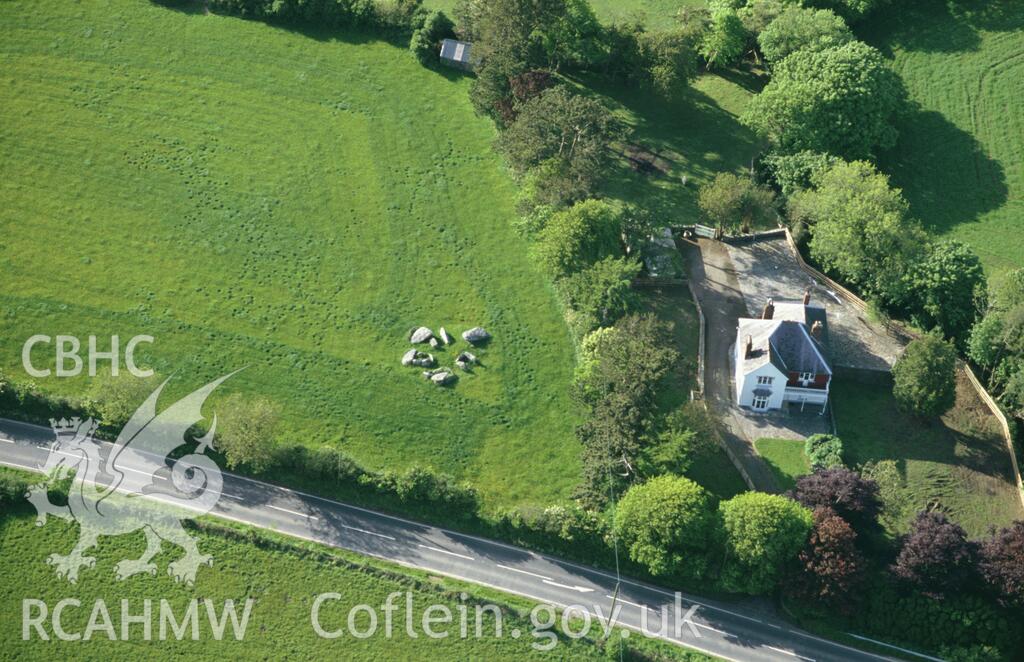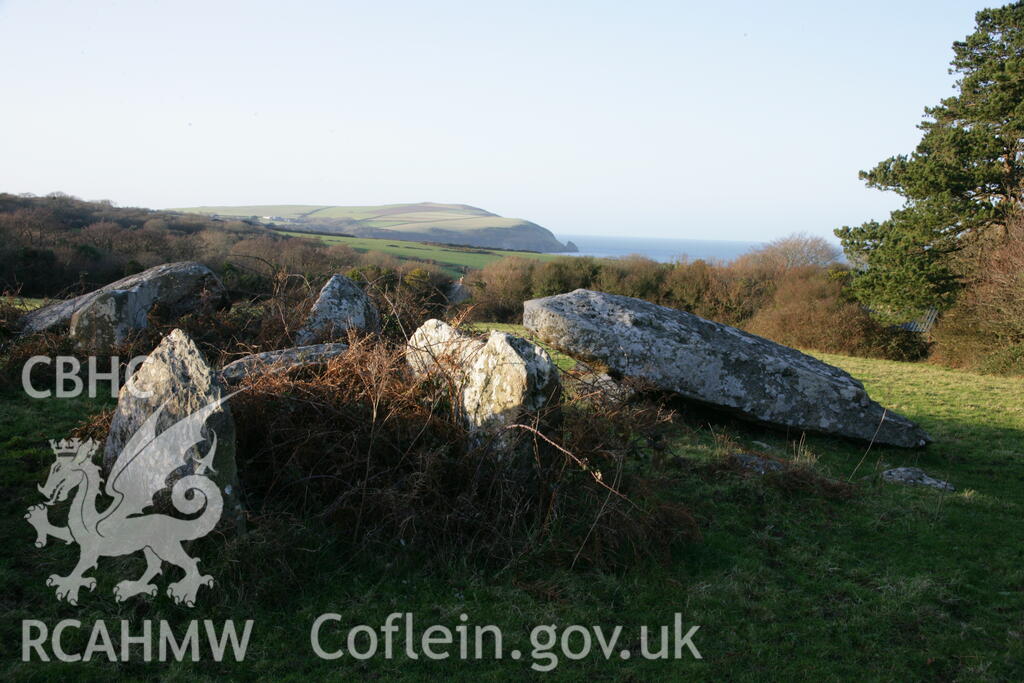Cerrig Y Gof, near Newport Pembs
Bronze Age burial tomb
Hidden in a field some mile and a half west along the A487 from Newport towards Fishguard is Cerrig Y Gof. The tomb lies just inside a gate a few meters from the road.

The site is on private land but can be viewed from the gate. Consisting of five cists (small oval burial chambers) made from stone it is one of north Pembrokeshire's lesser known ancient monuments.


The main five cists are laid out in a semi circular pattern with each cist facing a different direction. One of the outer lying stones has a possible cup mark carved in to it.
Various finds have been recorded from the site including black sea pebbles, pottery and some particles of bone.
Of Cerrig y Gof - from an actual Tomb Raider!
An extract taken from 'A historical tour through Pembrokeshire' by Fenton 1811
"Leaving Newport I pursue the Fishguard road, and after a pleasant ride of three miles, with the noble mountain of Carn Englyn on the left, and the ocean on the right, with the bold promontory of Dinas and its correspondent headland of Ceibwr here straitening it into the bay of Newport, I come to a singular cluster of Cistvaens, which, having provided myself with labourers, I was prepared to open, permission being very politely granted me for that purpose by George Bowen, Esq. of Llwyn gwair, on whose property they were.
This group, consisting ' of five placed in a circle, radiating from a centre once occupied by what is denominated a Cromlech, long since overturned, stood on a gentle rising in a field to the right of the road, and was almost hid, being overgrown with weeds and briars, and, by several upright stones still to be traced, seemed to have been surrounded by an extensive circle of such, forming the mysterious precinct. Having removed the lid stones of the cists, and digging down about a foot through fine mould, I came to charcoal, and soon after discovered pieces of urns of the rudest pottery, some particles of bones, and a quantity of black sea pebbles. I opened them all, and with a very trifling variation of their contents found them of the same character.
In the vacant space between each Cistvaen, as well as in the centre over which the Cromlech had been raised, I likewise dug, but found nothing indicatory of sepulture, furnishing a strong presumption that it was for a very different use. The largest lid stone was thirteen feet three inches in length, nor wrere the others much less, and the whole group was in circumference forty-two yards. Before I had made this experiment on so many together, I think perfectly decisive of their use, there was every reason to suppose, from the form and name of the Cistvaen, that it was sepulchral, and perhaps for the Druids only, particularly wrhen, like these, they differed so essentially from what in general we meet with : yet it still remains to be ascertained for what purpose that relic 1 of remote antiquity called the Cromlech, though too often confounded with the other, was erected, and about which antiquaries in their opinion are still divided."
Stay near Cerrig Y Gof:
- Holiday Cottages Newport
- Bed and Breakfasts
- Camping and Caravans
- Holiday Parks & Resorts
- Yacht & Boat Charter
Directions:
From Newport, head west along the A487. After approximately 1.5 miles you will go down a dip. At the base of the dip there is a gate on your right. Cerrig Y Gof is in the field behind this gate.
Please note: The site is off a very busy main road with a 60mph speed limit. There is no imediate parking - parking can be found on the verge side off the main road towards Newport on the left at the top of the small hill.
All Images used in this article are Crown copyright and are reproduced with the permission of Royal Commission on the Ancient and Historical Monuments of Wales (RCAHMW), under delegated authority from The Keeper of Public Records.
What3words
Useful links:
- Coflein.gov.uk - More info and photographs of Cerrig y Gof
- TheModernAntiquarian.co.uk - Gallery of Cerrig y Gof photographs..
- Megalithic.co.uk - Cerrig y Gof article..



